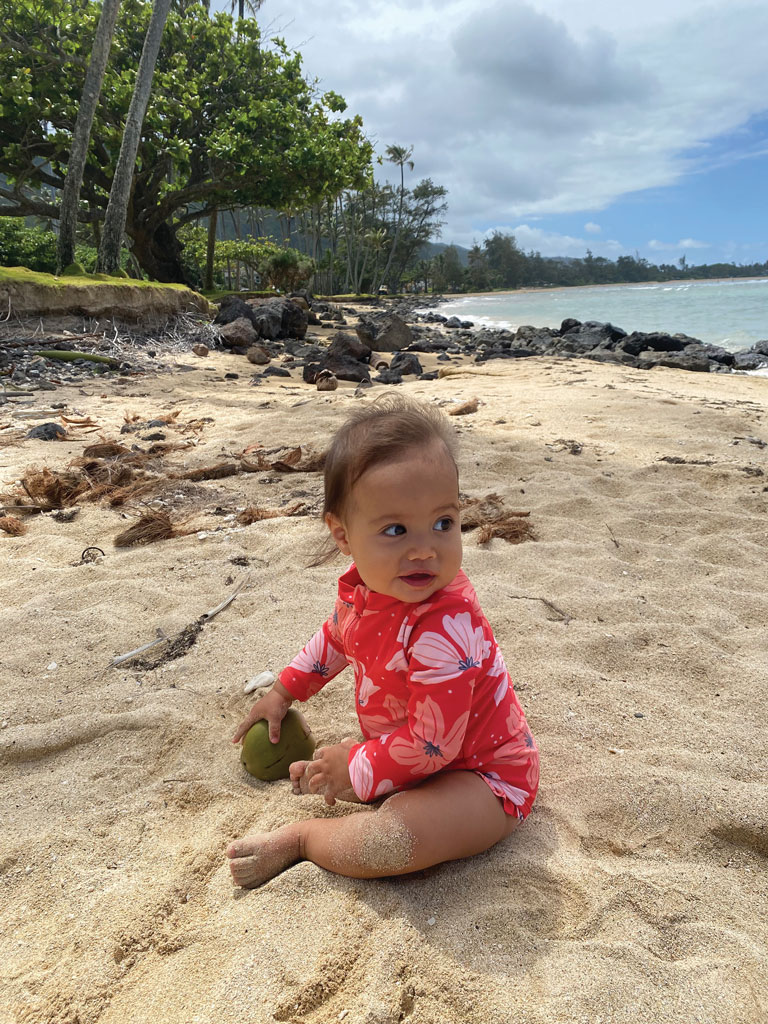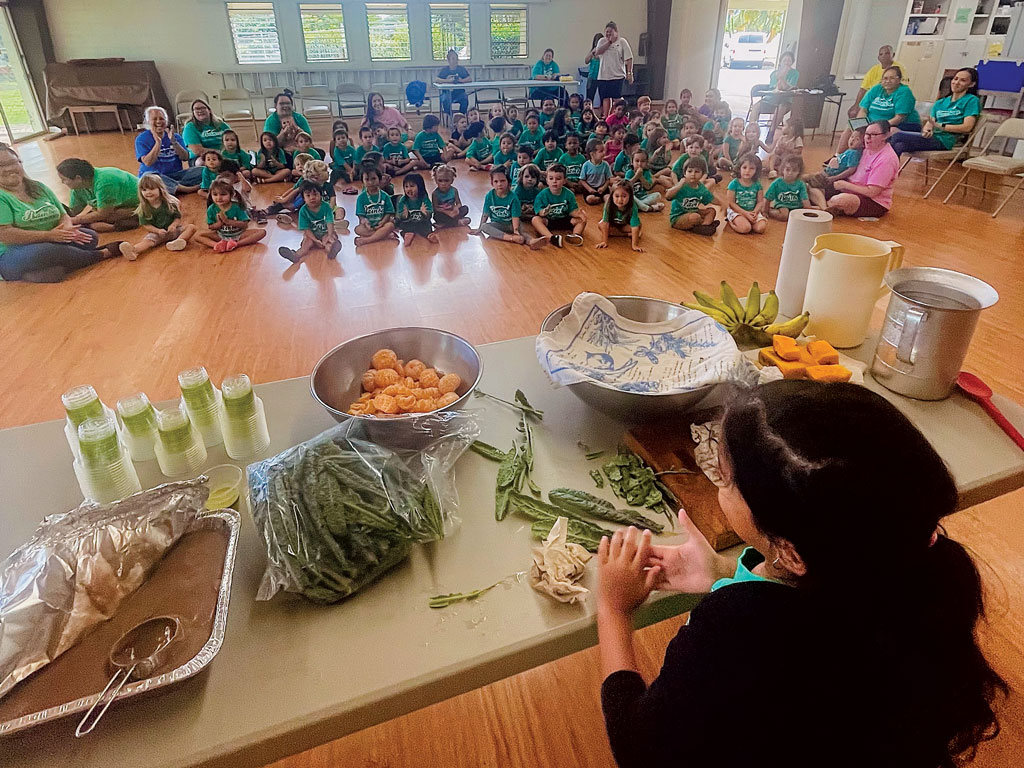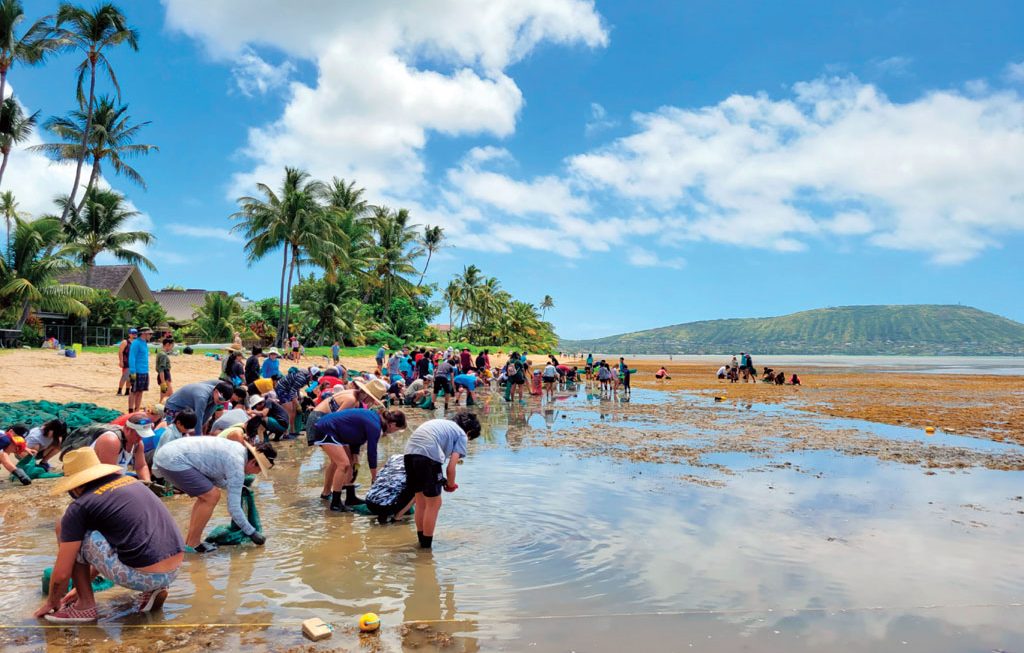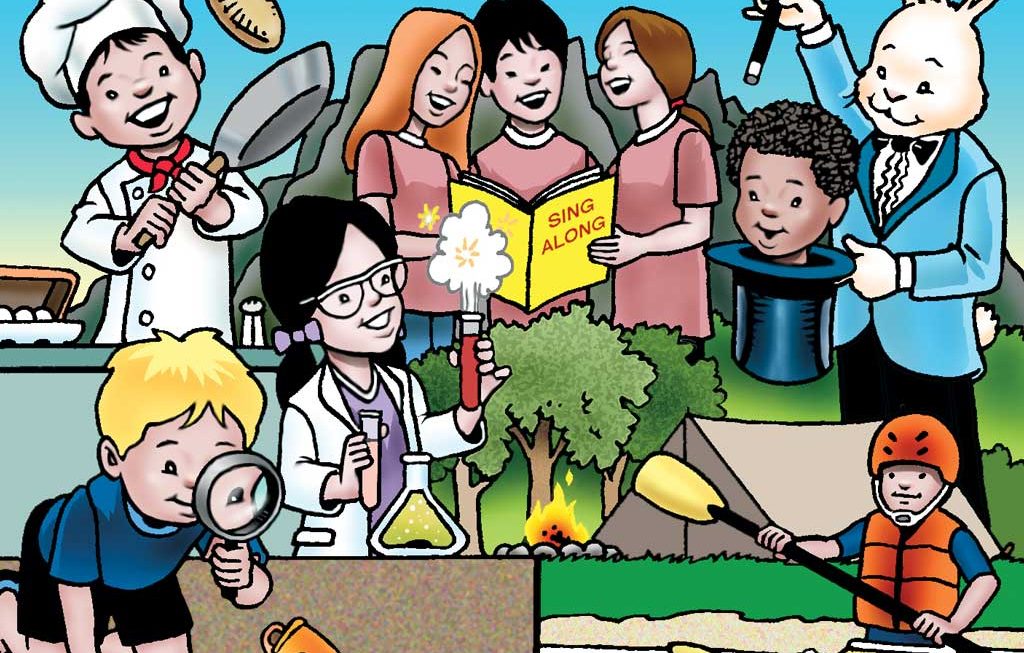by Stephanie Lopes
“Observe the beautiful environment of Hawaii when driving in the car: the beaches, the mountain ranges, the different types of trees, the flowers, the clouds. When children learn through the environment, it helps to grow their language, physical, social-emotional, and cognitive skills,” says Jayne Arasaki, program director of Rainbow Schools.
Thanks to a five-year-long partnership with The Kōkua Hawaiʻi Foundation, all five of Rainbow Schools’ Oahu locations have environmental education programs. Rainbow Schools have received grants for their early childhood preschools to grow classroom gardens and to go on field trips to environmental destinations, such as Waimea Falls, Kahuku Farms and Kualoa Ranch.
“We are so grateful for The Kōkua Hawaiʻi Foundation,” Arasaki expresses. “Each of our schools can use the money based on their interests. Schools have grown classroom gardens, purchasing materials like garden beds, soil, and seeds with the grant monies.”
“Teachers also learn more about gardening, such as soil health and Hawaii native plants, and are given curriculum from The Kōkua Hawaiʻi Foundation. When gardening, we connect with community resources, like the University of Hawaii, and also involve parents,” Arasaki adds.
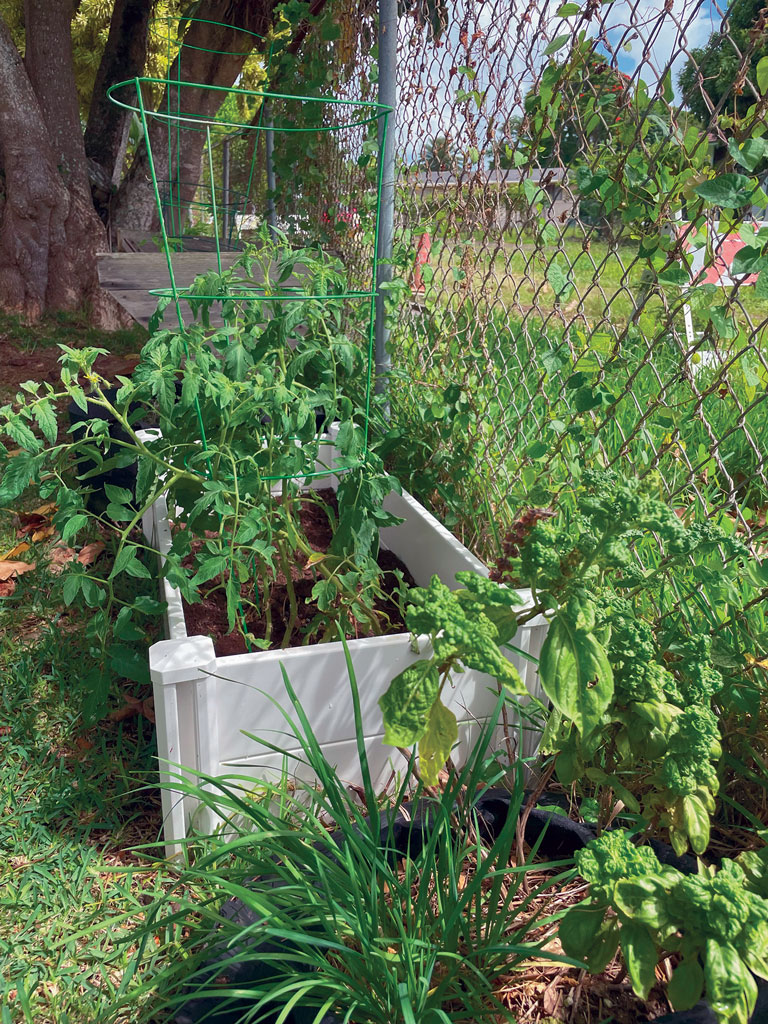
The Kōkua Hawaiʻi Foundation is a non-profit organization that supports environmental education in Hawaii schools and communities. Their mission is to provide students with hands-on learning experiences that will enhance their appreciation for and understanding of their environment, believing keiki are the seeds of change to preserving and protecting our beautiful islands.
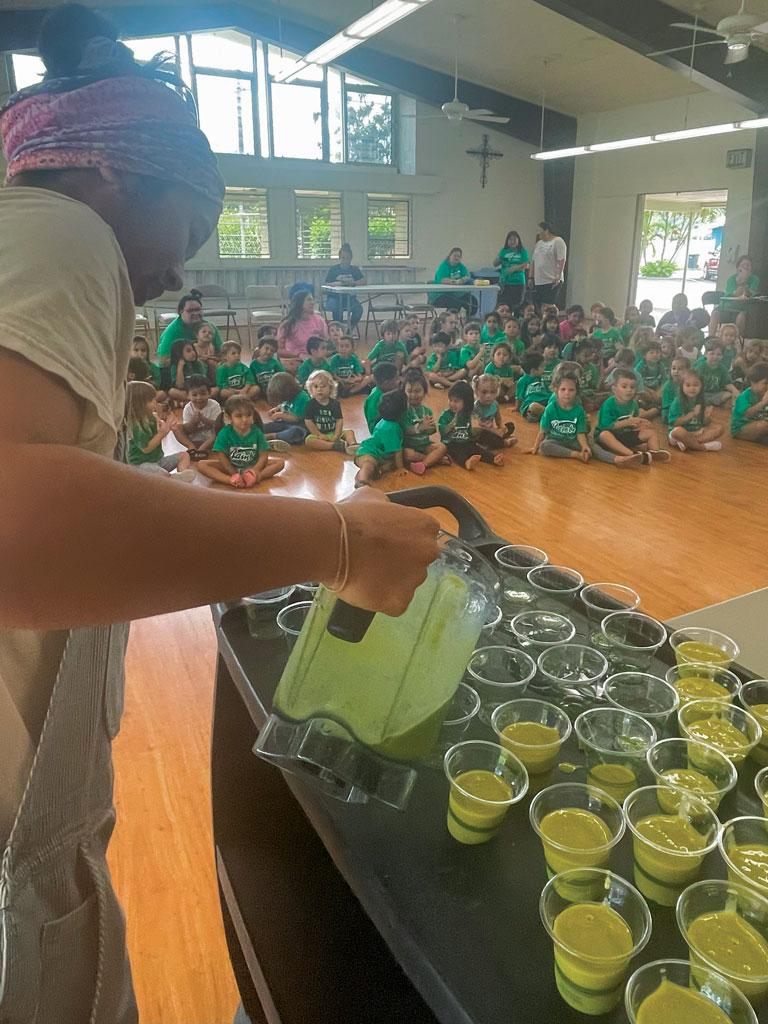
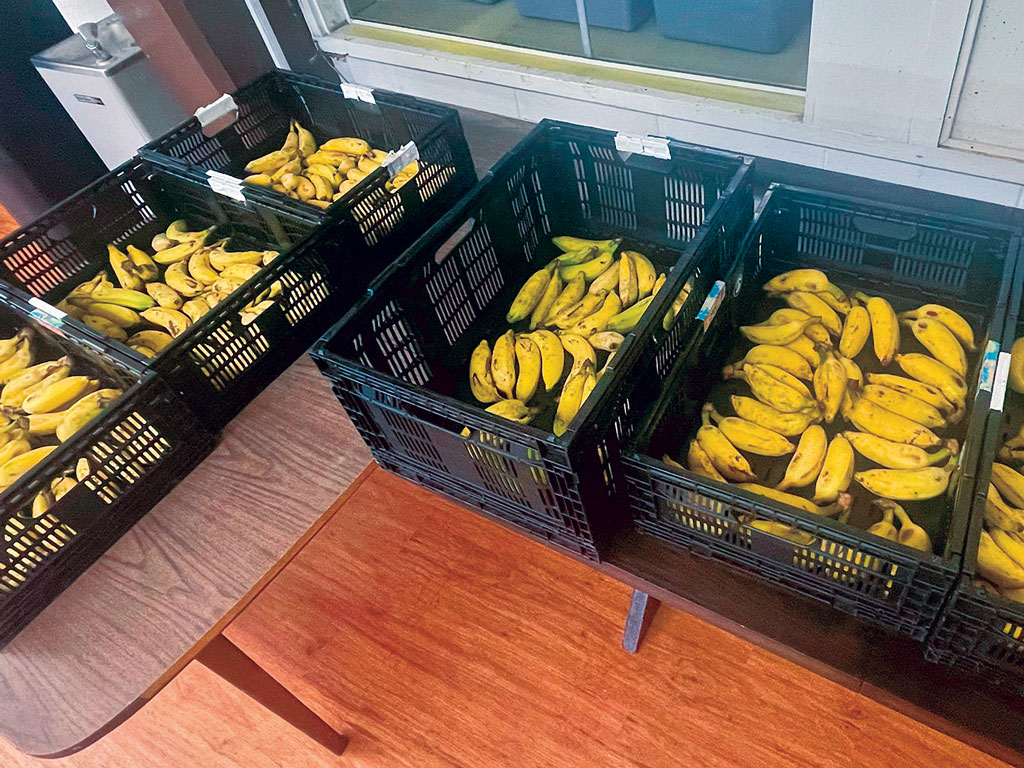
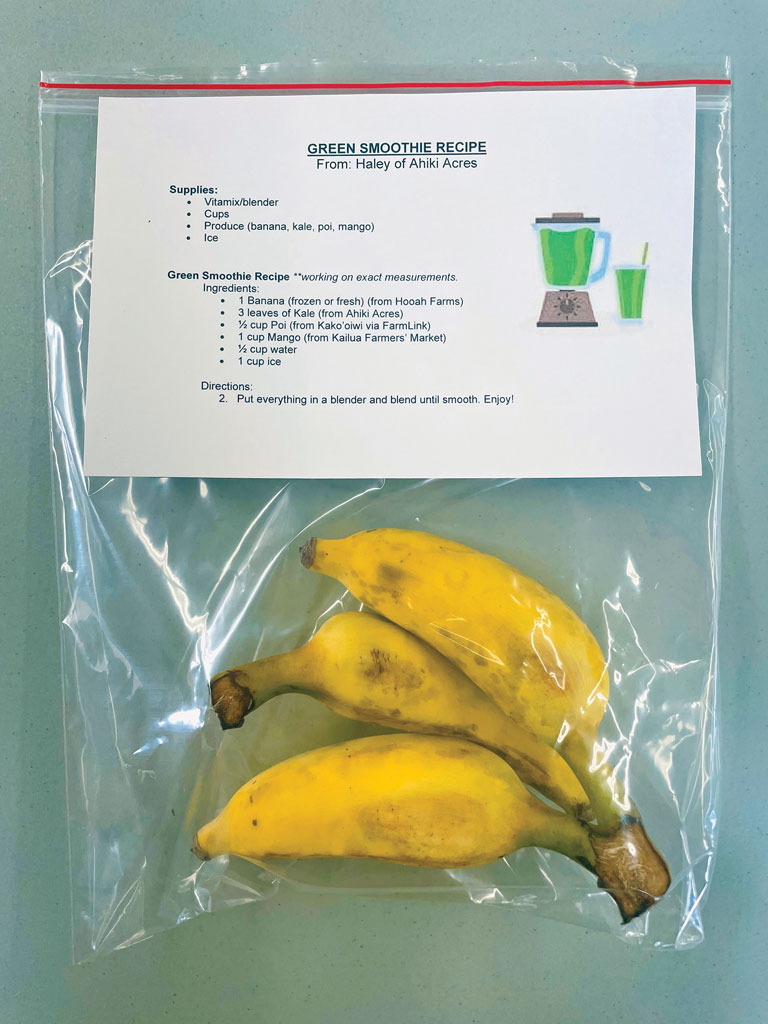
Thanks to this nonprofit, keiki from numerous public, charter and private schools throughout Hawaii have grown fruits and vegetables, gone on field trips to local farms, witnessed chef cooking demonstrations in classrooms, purchased supplies for environmental projects, minimized single-use plastics, and reduced, reused and recycled (the 3R’s).
Even from a young age, children benefit from environmental education, and all five of Rainbow Schools’ preschool sites have experienced a myriad of benefits from exposing students to the environment and growing gardens.
Whether in school, at home or out-and-about, Hawaii’s rich land and seas provide the optimal playground to cultivate an appreciation for the ʻāina.
Learn about plant lifecycles through inquiry and observation.
“Having a classroom garden brings an awareness of how plants grow, from start to end,” explains Rainbow Schools Kahuku center director, Elena Vierra. “The children look forward to visiting the garden daily to check if we still have strawberries, rosemary and other plants. Children would question: ‘How do plants grow? Why do they need water? When can we eat it?’”
The Rainbow Schools Wahiawa site grew sunflowers, learning about parts of the plant and what is needed to grow them. “The classes learned the life cycle of sunflowers and watched as they went from planting their sunflowers to watching them grow,” center director Tasha Murashige describes. “The children tracked the growth of their sunflowers and measured their growth and graphed them, also noting any changes.”
Promote kuleana and taking care of something.
Growing something – whether a plant, a pet, or a child – takes a lot of work, and through hands-on environmental education activities, students can begin to learn responsibility, or kuleana. Vierra expands, “Every day, students check for weeds or trash that do not belong in the garden by cleaning it. They even take out bugs from the garden!”
Recognize not-to-touch plants.
Some plants are toxic or harmful. In addition to teaching keiki about edible plants, teaching about not-to-touch plants is also important.
Arasaki expands, “As a part of our accreditation and an important lesson, we teach students about which plants are good to touch or not. If they are good to touch, we teach them what they are good for, and if they are toxic, we tell them why.”
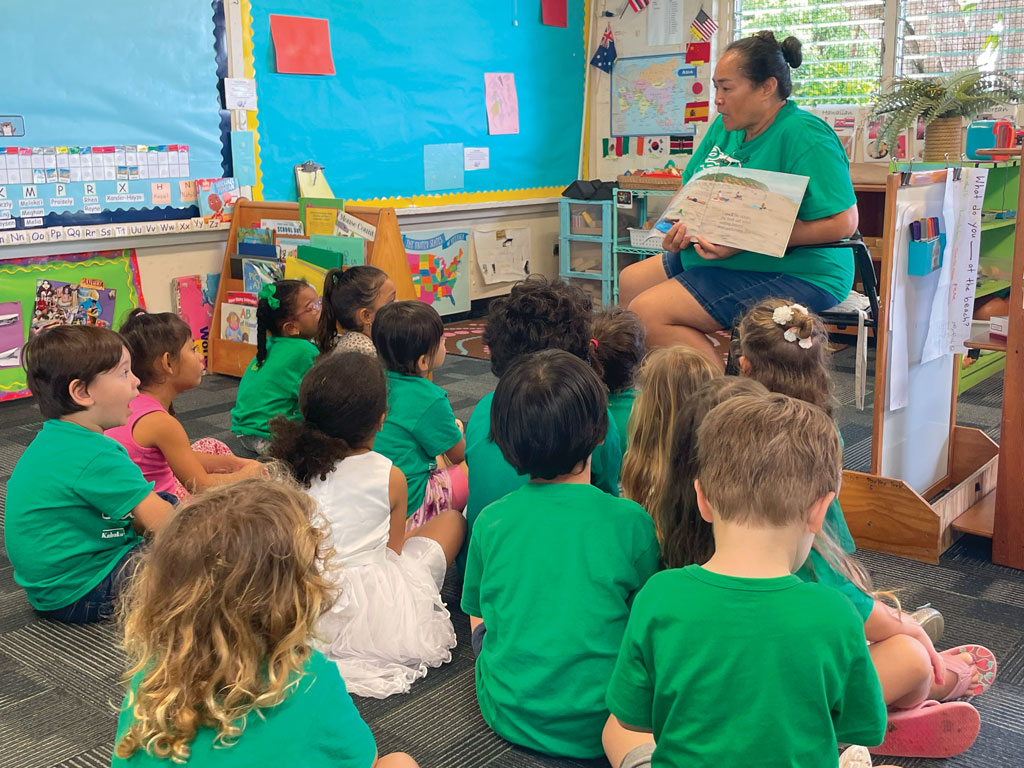
Develop reading and research skills.
A key component of The Kōkua Hawaiʻi Foundation’s support is they provide schools with curriculum for teachers and age-appropriate books for students. When starting a lesson or learning more about an environmental topic, students at Rainbow Schools look to books, and the students fall in love with reading, like they fall in love with gardening.
Rainbow Schools Wahiawa site read books about sunflowers to support their gardening efforts; Murashige says, “The books were very helpful for the children to be able to read and have books to look at and learn from.”
Over the summer at the Rainbow School in Mililani, they focus on different book topics each week. When the topic was local stories, “the staff incorporated the Hawaiian plants into their lesson plans,” mentions Mililani center director Rhiannon Guevara.
Communicate learning lessons.
Children are often excited about the environment and thrilled to share about what they are learning – developing important speaking and writing skills along the way.
At Rainbow School in Mililani, the classes planted puakenikeni, pikake, gardenia, and stephanotis. And, as the flowers blossomed, “the children really wanted to show their families the new plants and share how they helped in the process,” shares Guevara.
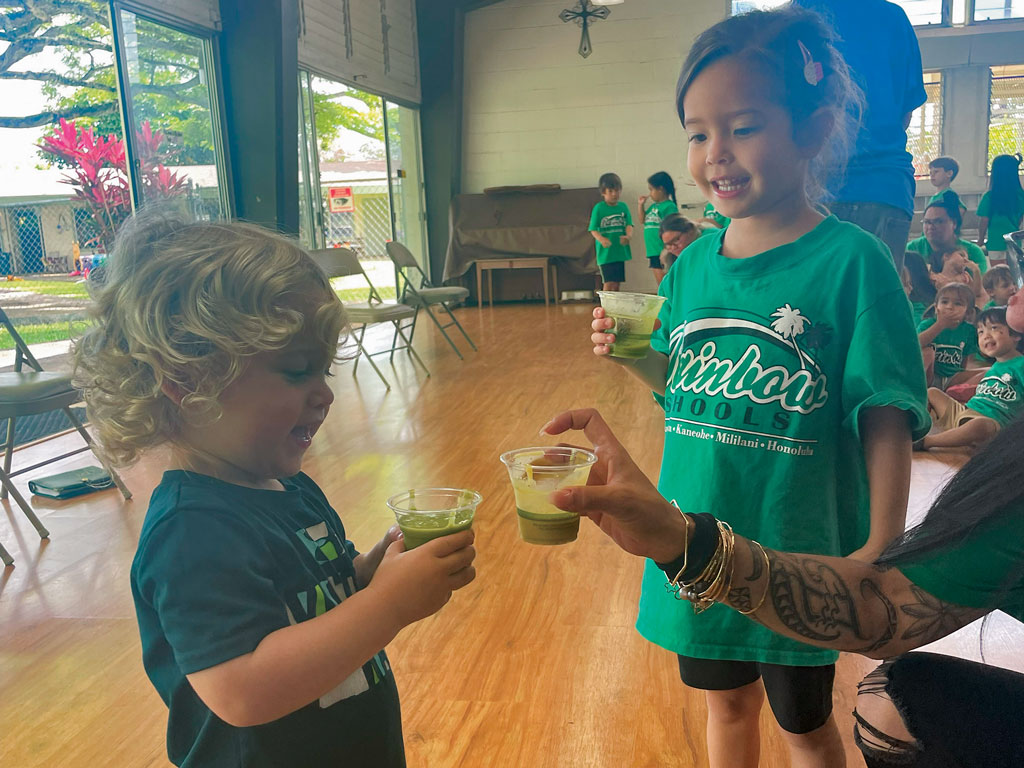
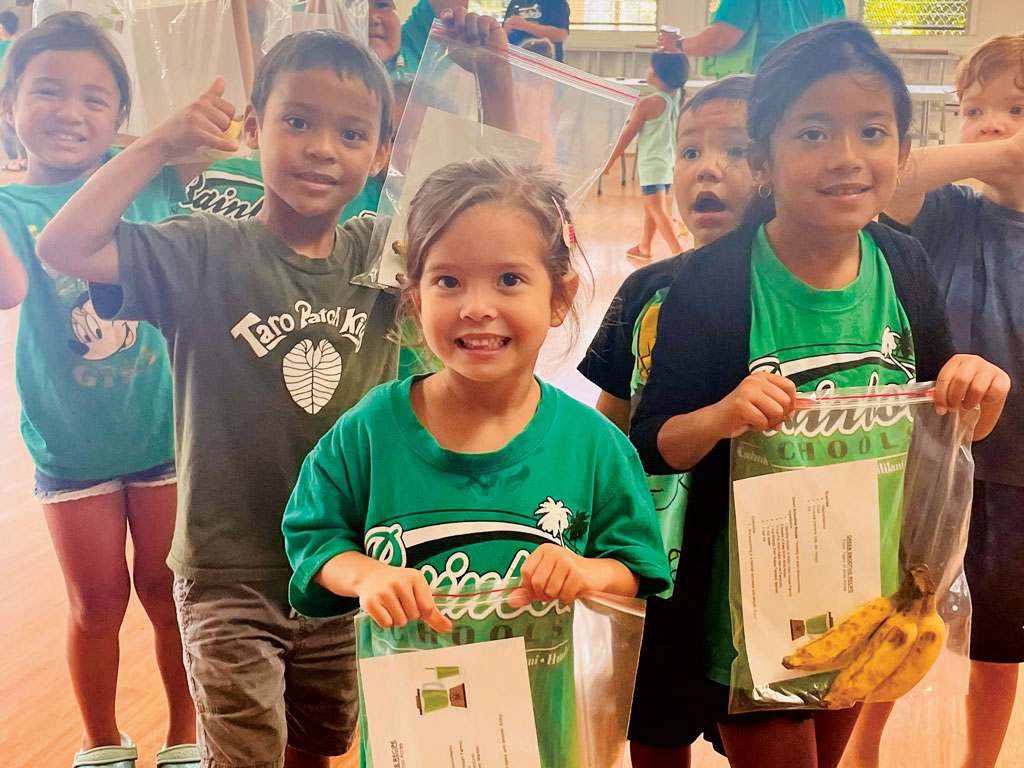
Recognize where food comes from and community resources.
Where do carrots come from? The store or the Earth? From trees or the ground? Many children might answer that carrots simply come from the store, not realizing the environment is essential to sustaining food in our fridges.
At Rainbow School in Kaneohe, the children graphed whether it is better to grow their own fruits and vegetables or to go to the store and buy them, discussing farmers markets and farmers who grow food. The end result of the survey was a tie, explains Kaneohe center director Teri Lo and teachers Natalie, Lataunya and Tori.
Having these critical conversations about the origin of food through hands-on activities is important for future generations to continue to thrive in Hawaii. Kaneohe Rainbow School students also learned that only around 20% of produce sold in Hawaii is grown locally through their partnership with Ahiki Acres, a Waimanalo farm.
Explore healthy recipes.
Many might say the best part of growing food is eating it. “Younger children mostly learn through observation and doing, while older children can learn about the vitamins of different produce, such as carrots are good for the eyes,” mentions Arasaki.
Rainbow Schools in Kaneohe experienced eating healthy foods through a green smoothie cooking demonstration, with the support of Ahiki Acres and The Kōkua Hawaiʻi Foundation. “We also sent home the recipe and a banana for the children to make with their families,” says Lo.
At the Honolulu Rainbow Schools location, they harvest cucumbers and more; “students learn to eat different types of plants they normally wouldn’t have access to,” explains Arasaki.
Honolulu and Kaneohe locations also used The Kōkua Hawaiʻi Foundation grant money to send home sweet potato to families – along with a recipe. “We encourage eating local produce and going to the farmers market as much as possible,” adds Arasaki.
Give a perfect plant present.
Giving is an important lesson for children to learn, and the gift of a special, sustainable plant is to be cherished.
Many Rainbow Schools mothers were presented with school-grown plants for Mother’s Day. The Wahiawa site sent home sunflowers while the Honolulu site made gifts of flowerpots, adding flowers to the classroom garden beds as well. Of course, mothers adored their plant presents, and the children benefited from the many lifelong lessons they learned about the environment.
“What we try to teach our children is to give back to nature because it gives us so much,” concludes Arasaki.
Top Ten Tips for Parents to Cultivate an Appreciation of the ʻĀina
- Go outside and relax. Enjoy the sunlight. Feel the sand and grass.
- Hike. Point out the beauty of the environment.
- Go on a scavenger hunt for different rock shapes, leaves, bugs, or soil textures.
- Observe Hawaii’s environment when riding in the car.
- Plant a home garden, or participate in a community garden or lo‘i (fish pond).
- Eat locally grown produce and discuss where food comes from.
- Cook. Experiment with new recipes and varieties of produce.
- Give plant presents.
- Create art with the environment (collages, printing, weaving tī leaves).
- Read environmentally related books, such as how to take care of plants.
